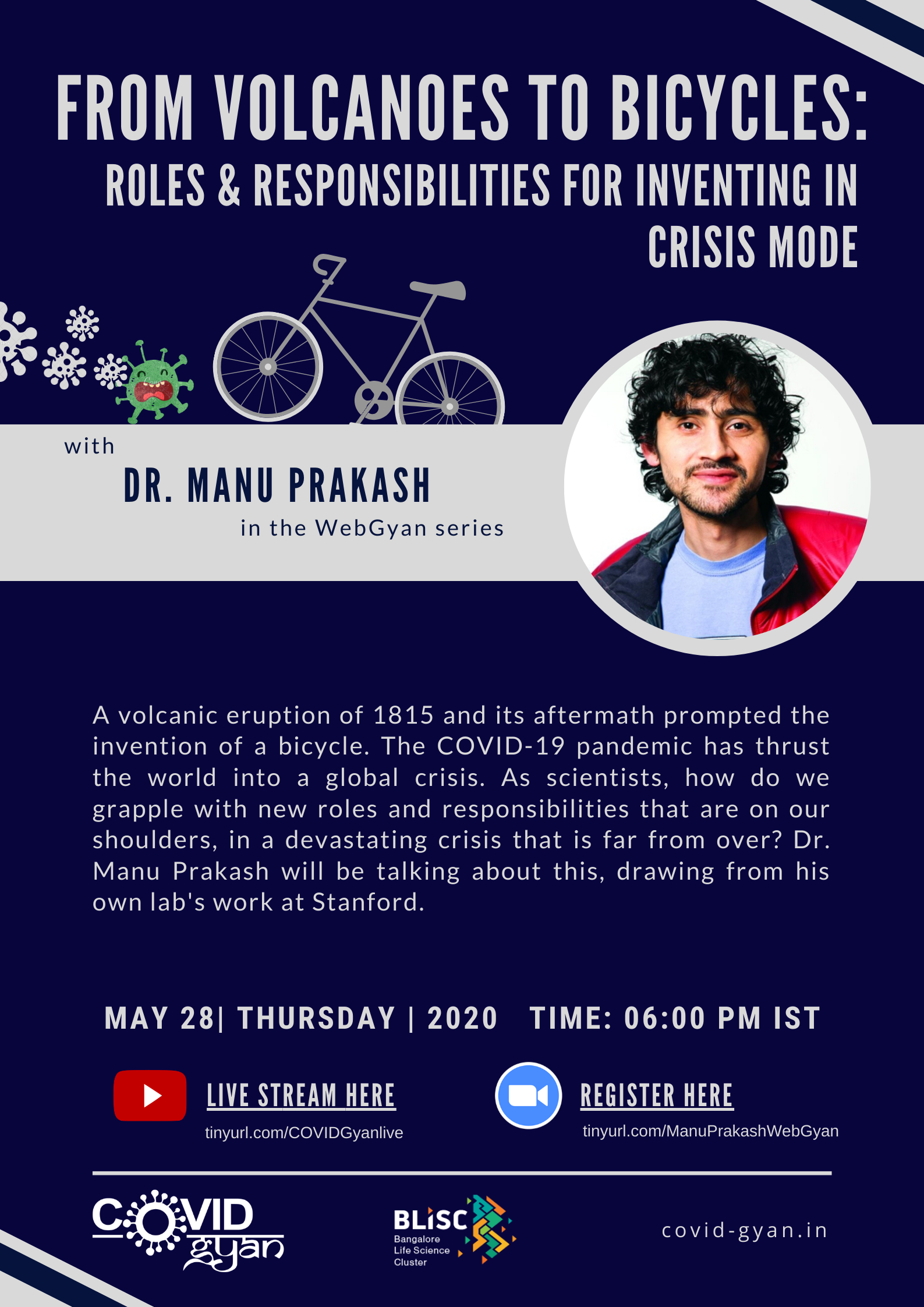Dr. Manu Prakash, renowned for his frugal science approach, was the speaker of the third WebGyan session, on ‘From Volcanoes to bicycles: Roles and responsibilities for inventing in crisis mode’.
A volcanic eruption of 1815 and its aftermath prompted the invention of a bicycle. The COVID-19 pandemic has thrust the world into a global crisis. Dr. Prakash tackled the question, “As scientists, how do we grapple with new roles and responsibilities that are on our shoulders, in a devastating crisis that is far from over?” As a lab that traditionally works on developing frugal science-based solutions for medical problems in resource-constrained environments, the members of the Prakash Lab at Stanford University found themselves exploring ways to invent their way through the current challenges, guided by needs identified by global community partners.
Dr. Prakash described the timeline from invention to implementation in crisis mode - using four projects as quick case studies. The first he discussed was Pufferfish, a low-cost and open-source, easily manufacturable full-feature ventilator that does not depend on currently strained medical supply chains. The second was Pneumask, a reusable PPE solution, based on full-face snorkeling masks for protecting health care workers who are lacking PPE. The third project began as one which converted a cotton candy machine to produce fine electrospun polypropylene fibers that could be used to produce N95 masks. The Project 1000x1000: N95 factory in a box envisages small units, each producing only 1000 masks a day, but at 1000 locations across the world, thus achieving a million masks a day. The last project he described is N95Decon, an international consortium of scientists that reviews the worldwide literature and utilises primary data to develop consensus guidelines on N95 decontamination and reuse methods, for developed countries, and especially in the context of low and middle-income countries.
The projects Dr. Prakash discussed are based on innovation focused on manufacturing, and open collaborations with industry and other scientists, using what is available when authorities are swamped as well. The basis of the unexpected and innovative ideas which became the backbone for some of the lab’s projects, is to think about basic and applied science together. Dr. Prakash mentioned his habit of developing a mental filing system for storing interesting concepts and pulling them up later when they’re needed, such as with the cotton candy machine concept or previous projects.
Dr. Prakash underlined the need for scientists and engineers to share data and ideas without intellectual property constraints for wider collaboration. Using standard tools in a modular way is key to making many of the life-saving equipment in a distributed and decentralised way. When asked about how to be a cool innovator, he mentioned that holding a bunch of ideas and experiences on the one hand, and working without distinguishing between applied and theoretical investigations on the other hand is key for germinating ideas that work. The session ended on a note from Dr. Prakash, “Play is still the most important inspiration for ideas, even in times of crisis.”
With inputs from Prof. Arnab Bhattacharya, TIFR and Prof. G. Nagarjuna, HBSCE










0 Comments